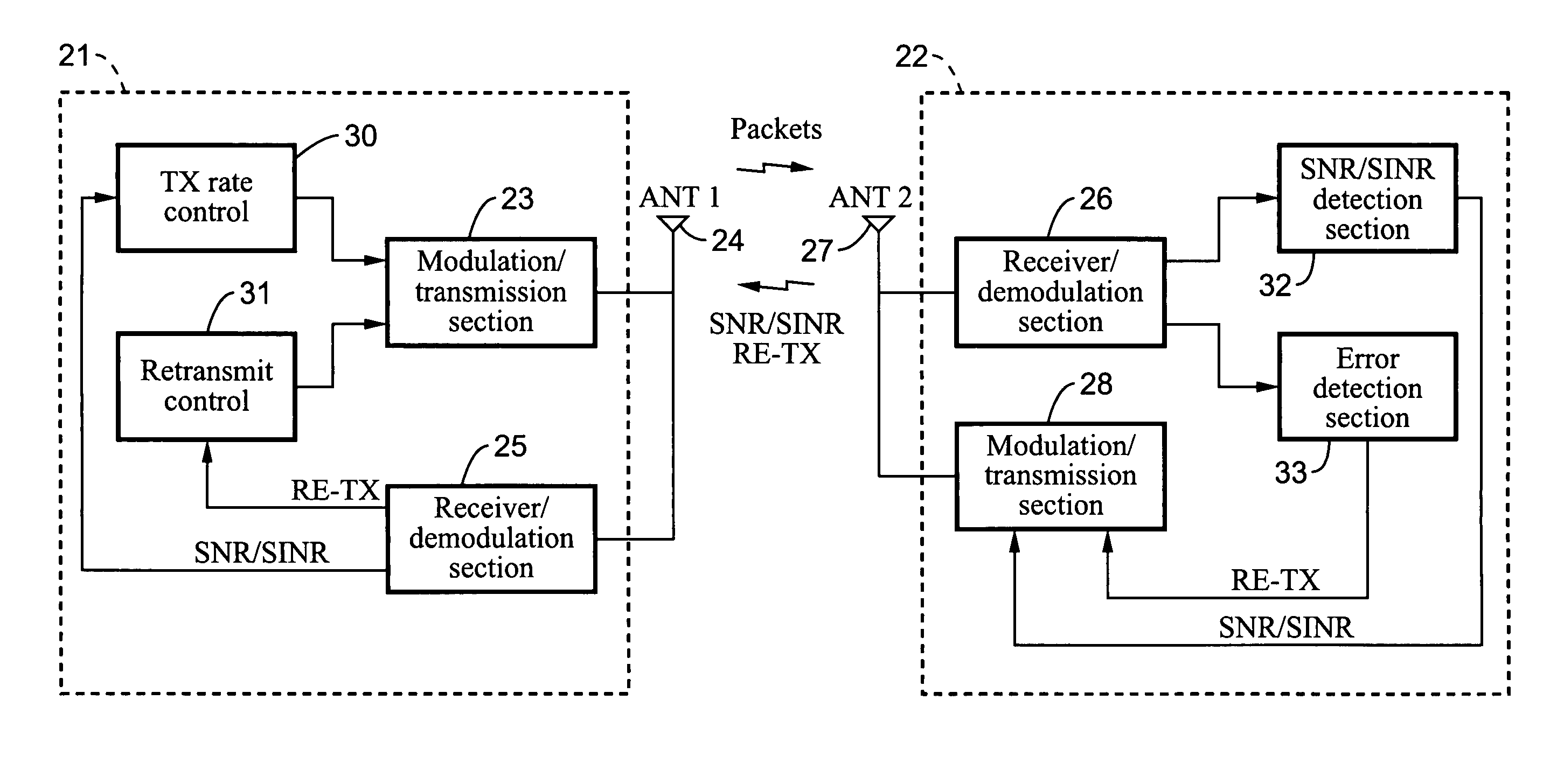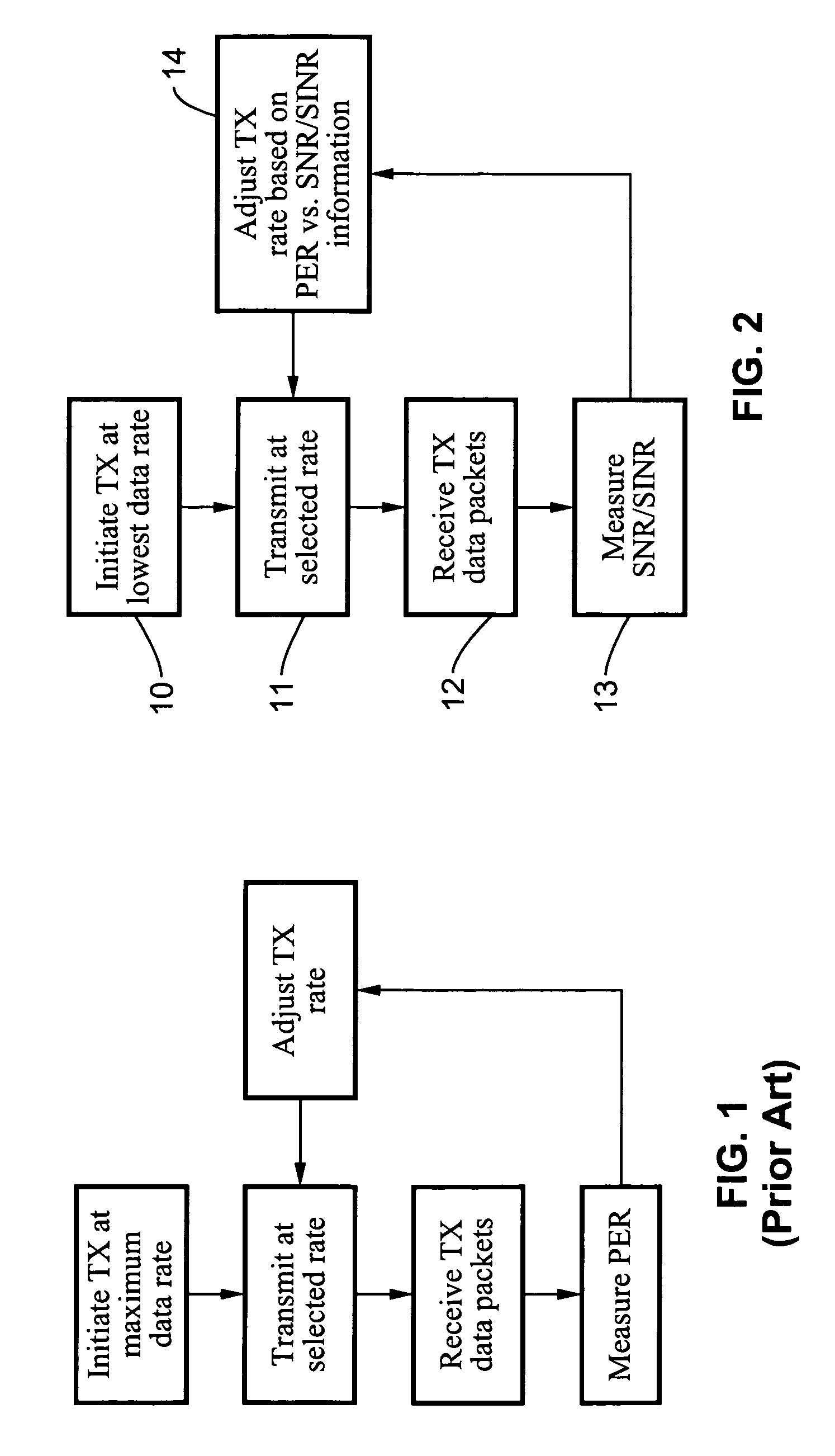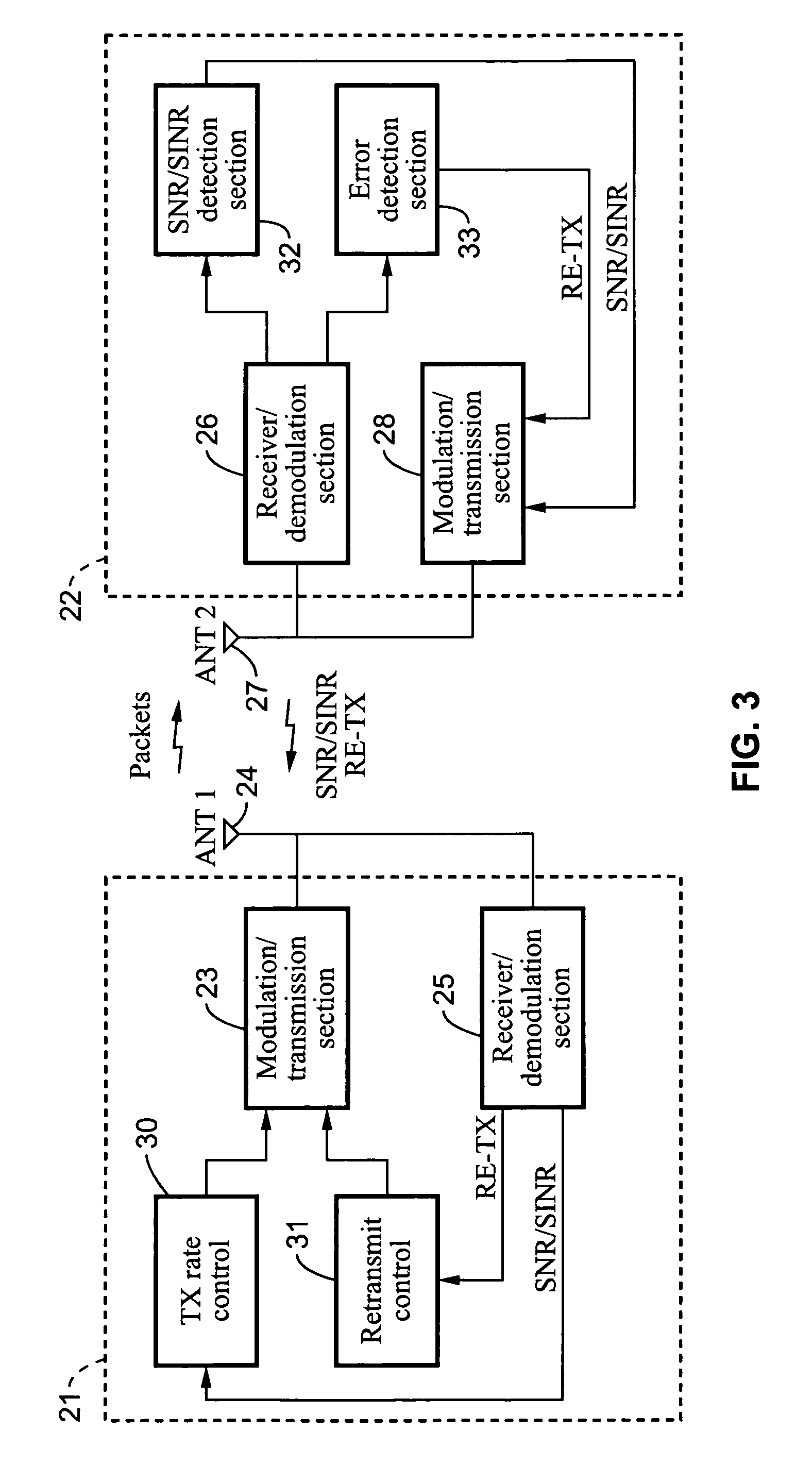Method and apparatus for selecting transmission modulation rates in wireless devices for A/V streaming applications
a wireless device and modulation rate technology, applied in the field of wireless communication, can solve the problems of packets to be received, less robust transmission techniques, and packet errors, and achieve the effect of avoiding packet errors
- Summary
- Abstract
- Description
- Claims
- Application Information
AI Technical Summary
Benefits of technology
Problems solved by technology
Method used
Image
Examples
example
[0047] Current SNR / SINR: −74 dBm
[0048] Average SNR over past 10 samples: −70 dBm
[0049] Margin (headroom): 14 dBm
[0050] Actual “SNR / SINR with margin” to use: −70−14=−84 dBm
[0051] Receive sensitivity at −80 dBm: 18 Mbps at 5% PER
[0052] Ideally the following is done in a further embodiment of the invention, shown in FIG. 8, as an improvement to the rate determination based on measurement of SNR / SINR / RSSI described above. This is the second version of the invention, where the estimates are sent back from the RX to the TX. The remote device sends back to the transmitter received SNR / SINR of the most recent packet received from transmitter, step 60. Also periodically sent is the most recent PER and number of retransmissions since the last such report, step 61. Also sent, step 62, is a table containing PER at different modulations for a particular SINR for the hardware used at the receiver, i.e. an a-priori table of receive sensitivities of the receiver hardware, provided in step 63. ...
PUM
 Login to View More
Login to View More Abstract
Description
Claims
Application Information
 Login to View More
Login to View More - R&D
- Intellectual Property
- Life Sciences
- Materials
- Tech Scout
- Unparalleled Data Quality
- Higher Quality Content
- 60% Fewer Hallucinations
Browse by: Latest US Patents, China's latest patents, Technical Efficacy Thesaurus, Application Domain, Technology Topic, Popular Technical Reports.
© 2025 PatSnap. All rights reserved.Legal|Privacy policy|Modern Slavery Act Transparency Statement|Sitemap|About US| Contact US: help@patsnap.com



